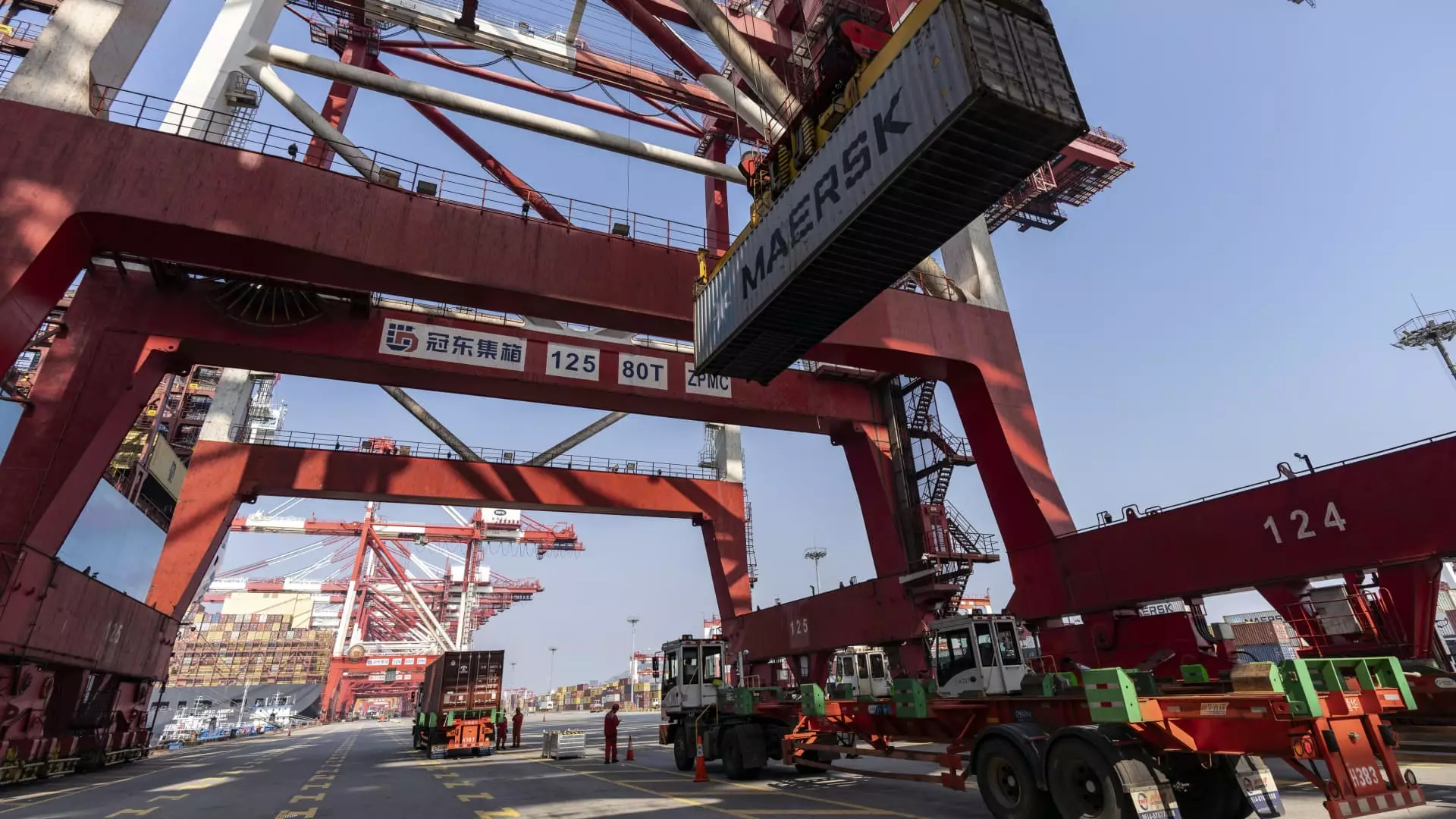China’s trade data for September 2023 has emerged as a critical indicator of the nation’s economic health, revealing a troubling divergence from expectations. As the world’s second-largest economy grapples with multifaceted challenges, the latest figures underscore significant headwinds, raising alarms not just within its borders but also in global markets.
November’s customs data reported that exports rose by a mere 2.4% year-on-year in U.S. dollar terms, while imports grew by just 0.3%. This lethargy stands in stark contrast to economists’ predictions, which anticipated a more robust 6% increase in exports and a 0.9% rise in imports. Such discrepancies highlight the precarious situation China finds itself in, as trade has historically been a keystone in driving its economic achievements. The slowdown in trade against a backdrop of stalled consumer spending and a struggling real estate sector raises questions about the sustainability of growth moving forward.
China’s exports have been stunted by escalating trade tensions, particularly with the U.S. and the European Union. The imposition of higher tariffs on Chinese products, including electric vehicles, creates significant barriers to maintaining competitive pricing in key markets. Despite a slight increase in exports to the U.S. by 2.2%, and a notable 6.7% rise in imports, the general atmosphere is heavy with uncertainty. Zhiwei Zhang, president and chief economist at Pinpoint Asset Management, articulated that a shift in fiscal policy is essential for sustaining growth in the coming year. Without aggressive policy adjustments, the threat of continued stagnation looms large.
Recent communications from China’s Ministry of Finance hinted at a willingness to expand the fiscal deficit, although concrete details remained scarce. This ambiguity raises questions among investors and market analysts regarding the efficacy of governmental measures to stimulate demand. Parsing through analysis from experts, it appears that increased fiscal expenditures could potentially bolster construction activities and stimulate demand for industrial commodities over the next couple of quarters, as suggested by China economist Zichun Huang.
However, the immediate implications of weak trade performance pose a dichotomy where increased fiscal spending may provide a temporary reprieve but might not address underlying systemic issues. If consumer confidence remains low, any short-term boost in construction and industrial demand may fizzle out quickly, leaving the economy in a vulnerable position.
China’s trade data reveals a complex interplay of regional results. The Association of Southeast Asian Nations (ASEAN) remains a significant trading partner, with exports increasing by 5.5% and imports rising by 4.2%. Conversely, exports to the European Union exhibited only a slight growth of 1.3%, while imports fell dramatically by 4%. Notably, despite a 16.6% increase in exports to Russia—driven by geopolitical dynamics—import falls of 8.4% suggest a contraction in bilateral exchange.
Sector-specific trends further illustrate the uneven nature of recovery. Exports of automobiles saw a reduction in growth speed to 25.7%, indicative of the broader automotive industry challenges, while exports of devices like smartphones, shoes, and toys have all dipped. The shifting dynamics in commodities, such as a 10.7% decrease in crude oil imports juxtaposed against a rise in natural gas and coal imports, reflect China’s strategic pivot towards stabilizing food security and enhancing its rare earth supply chain.
The sluggish performance of retail and industrial activity adds to a grim picture of domestic demand. The core consumer price index’s slight uptick of just 0.1% in September reflects chronic deflationary pressures; this marks the slowest growth rate since early 2021. As seasonal festivities fail to elevate demand in the tourism sector — evidenced by a 2.1% price drop year-on-year — the economic landscape further underscores the fragility of China’s recovery prospects.
With the National Bureau of Statistics set to unveil third-quarter GDP data, market sentiment remains precarious. While Chinese authorities have ramped up calls for stimulus, the specifics of fiscal measures to inspire investor confidence remain unclear. As markets react to these uncertainties, the potential for volatility heightens, leaving stakeholders to grapple with the implications of a sluggish economic recovery.
China’s recent trade performance has unveiled a constellation of challenges that extend beyond mere statistics. The interplay of domestic weaknesses, international trade tensions, and uncertain fiscal policy creates a complicated narrative for the world’s second-largest economy, one that necessitates astute navigation to maintain stability and growth in the face of adversity.

